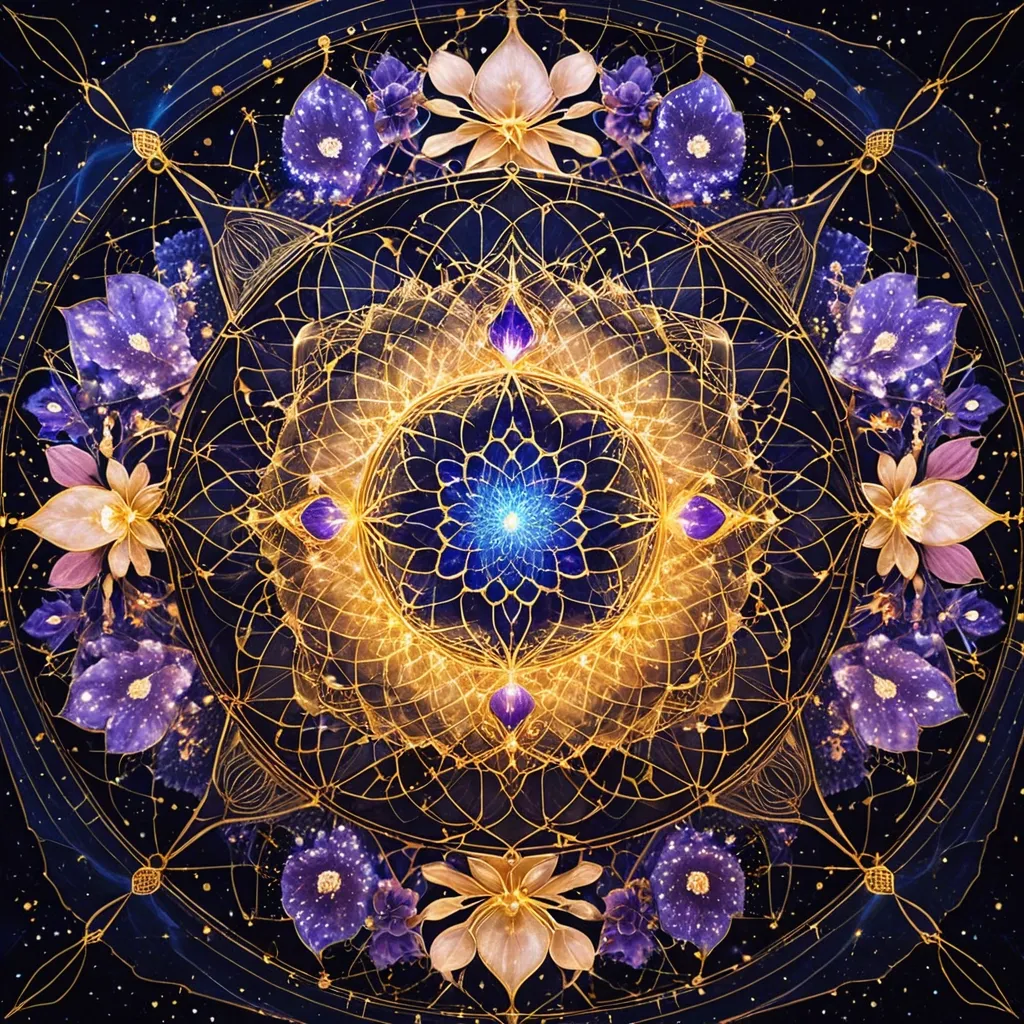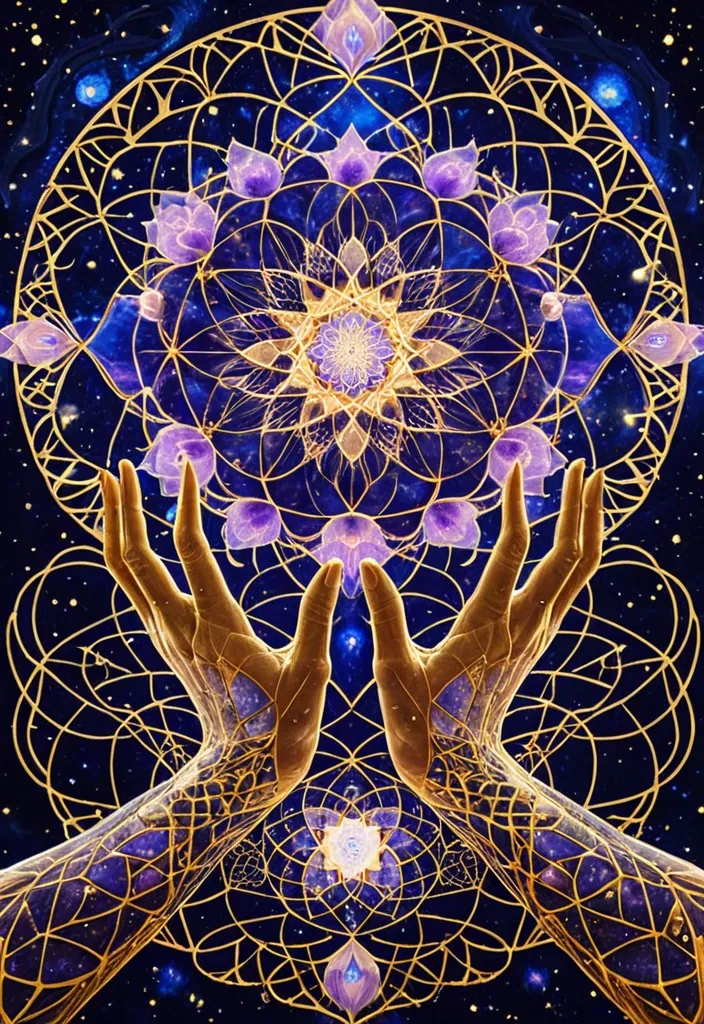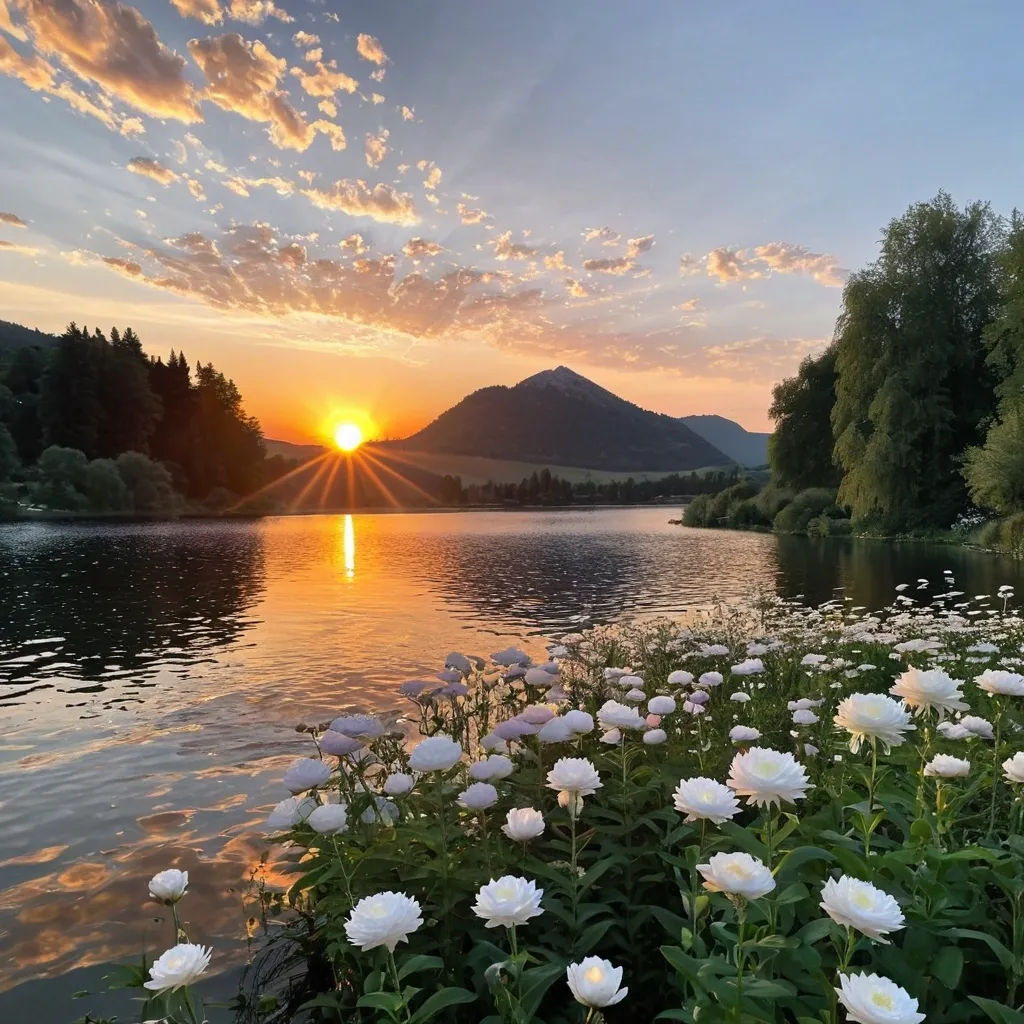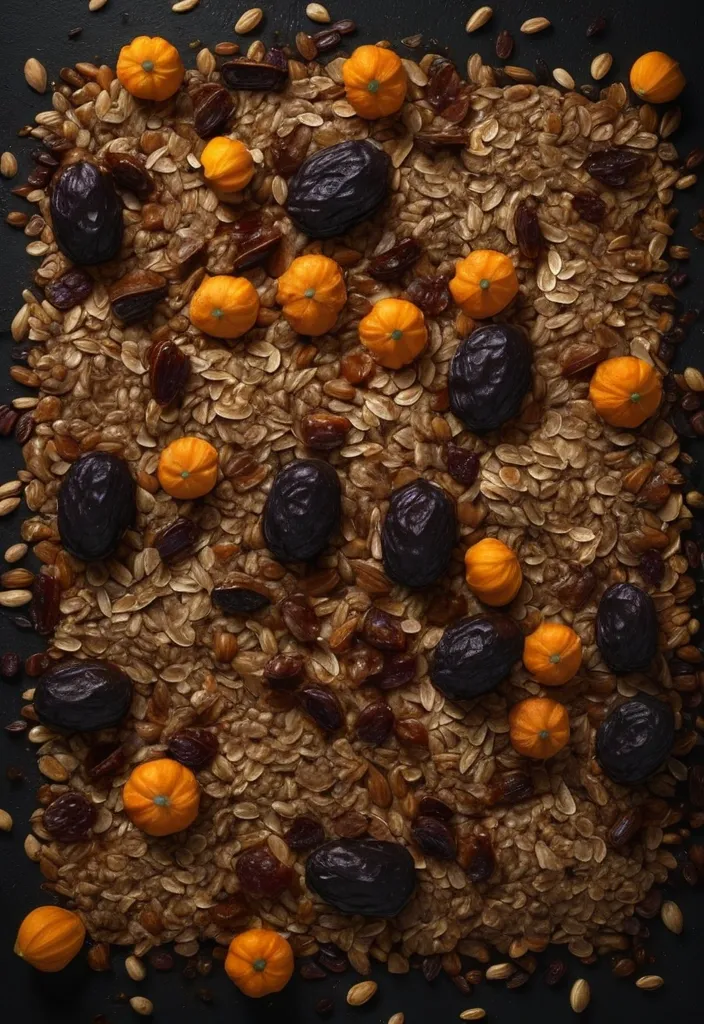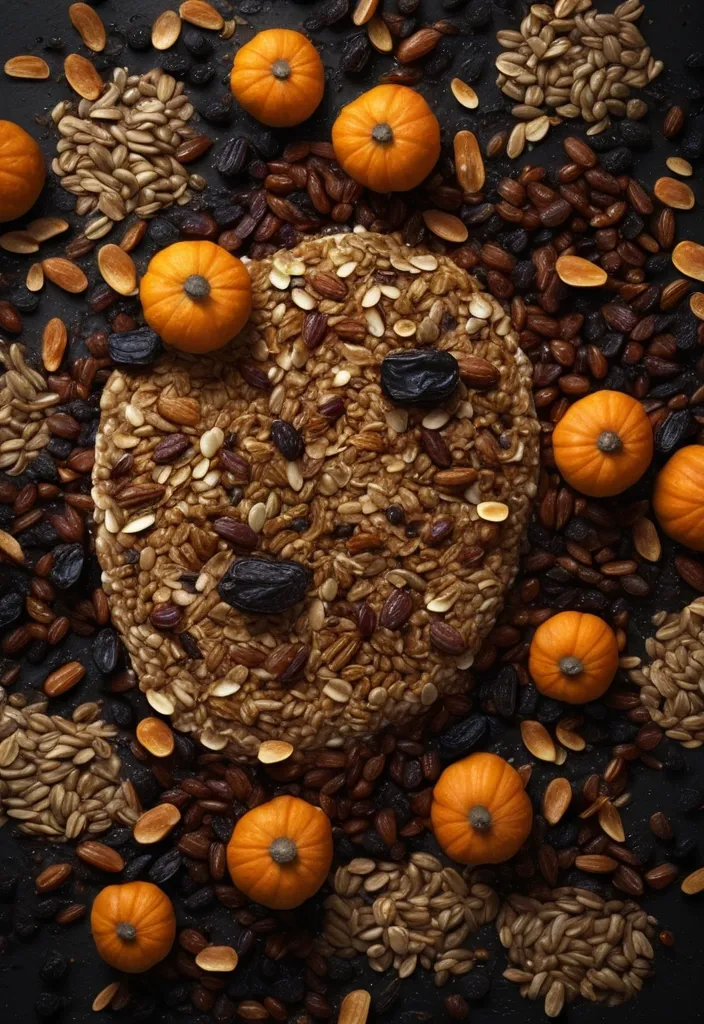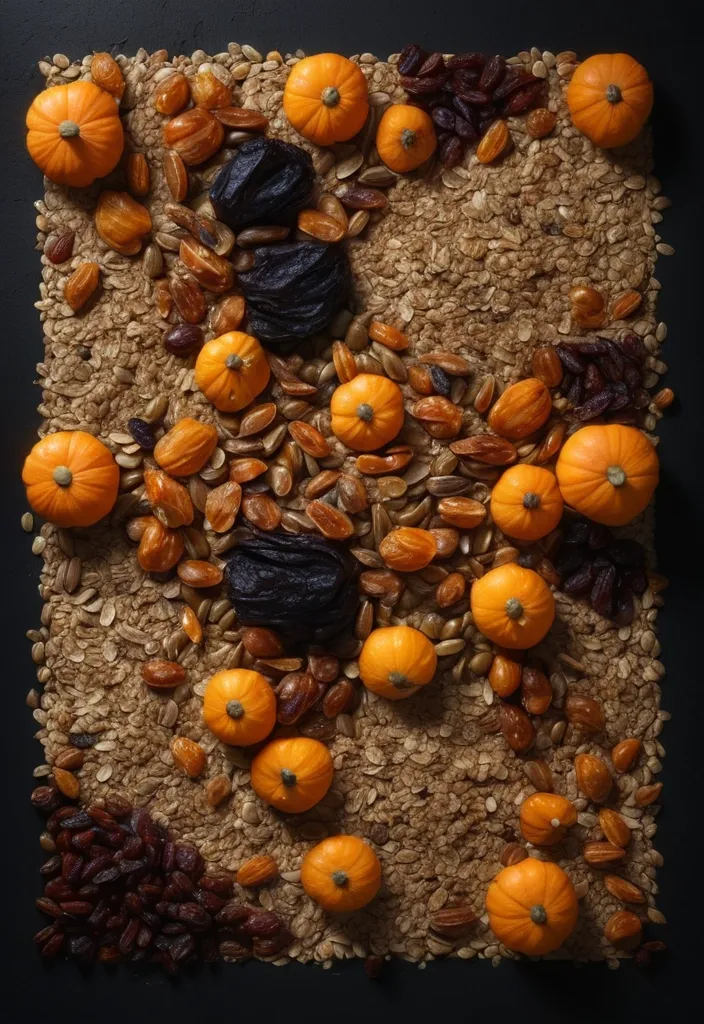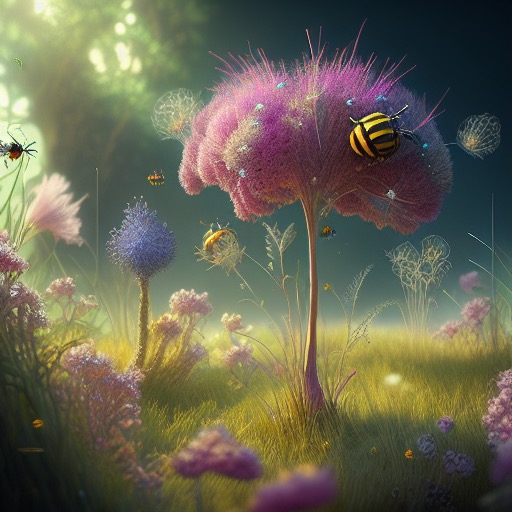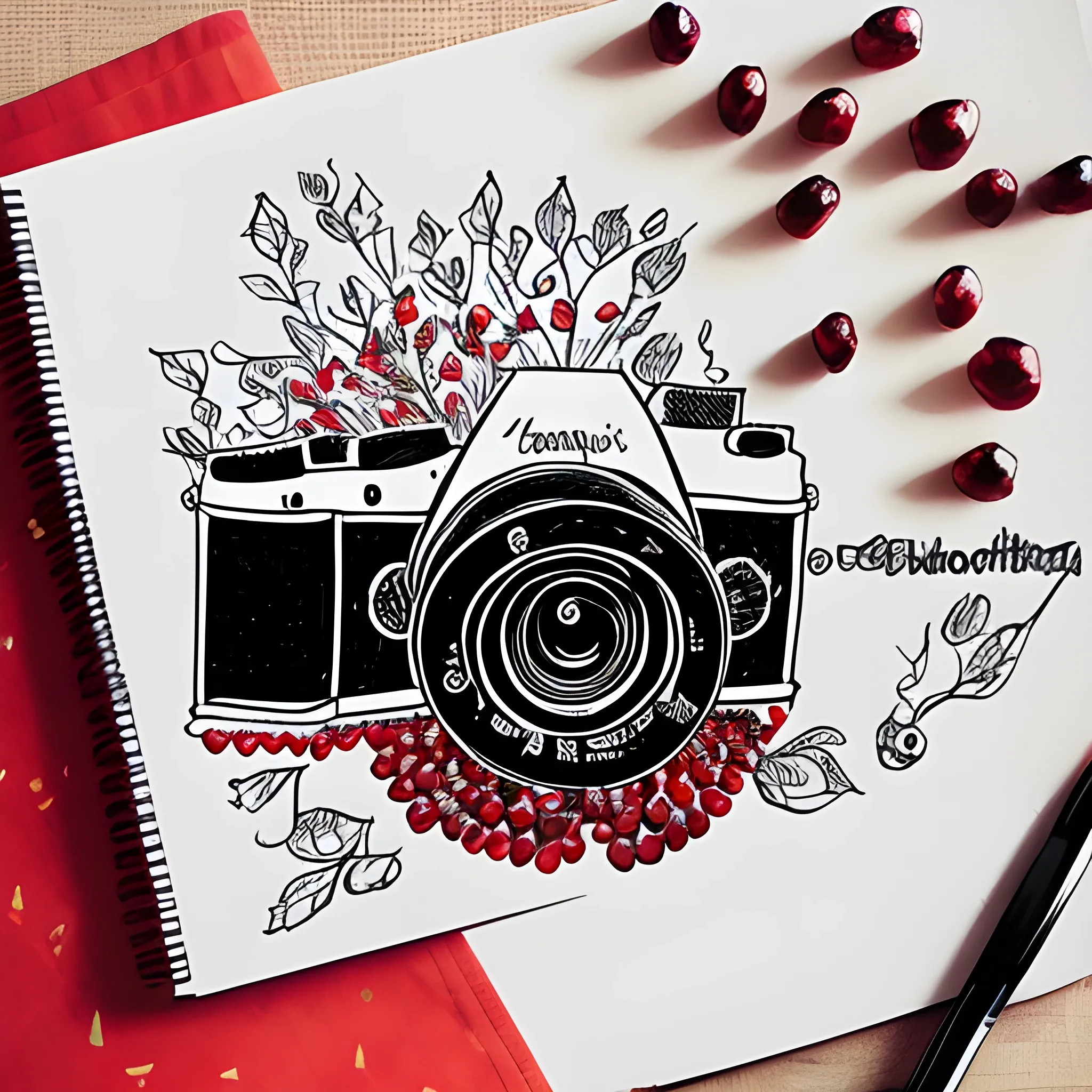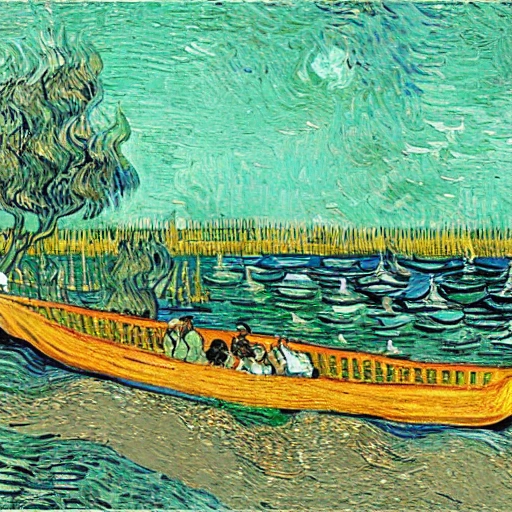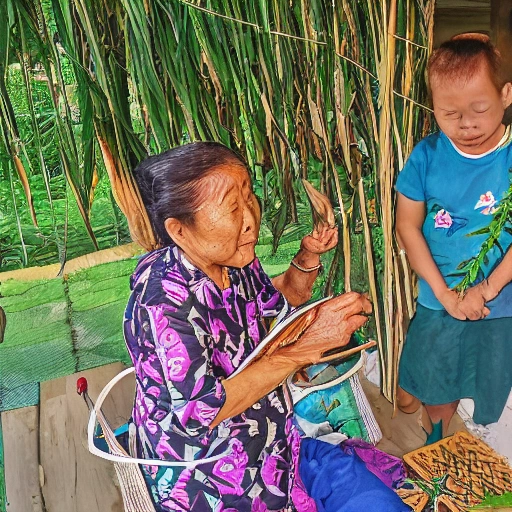Search Results for seeds
Explore AI generated designs, images, art and prompts by top community artists and designers.
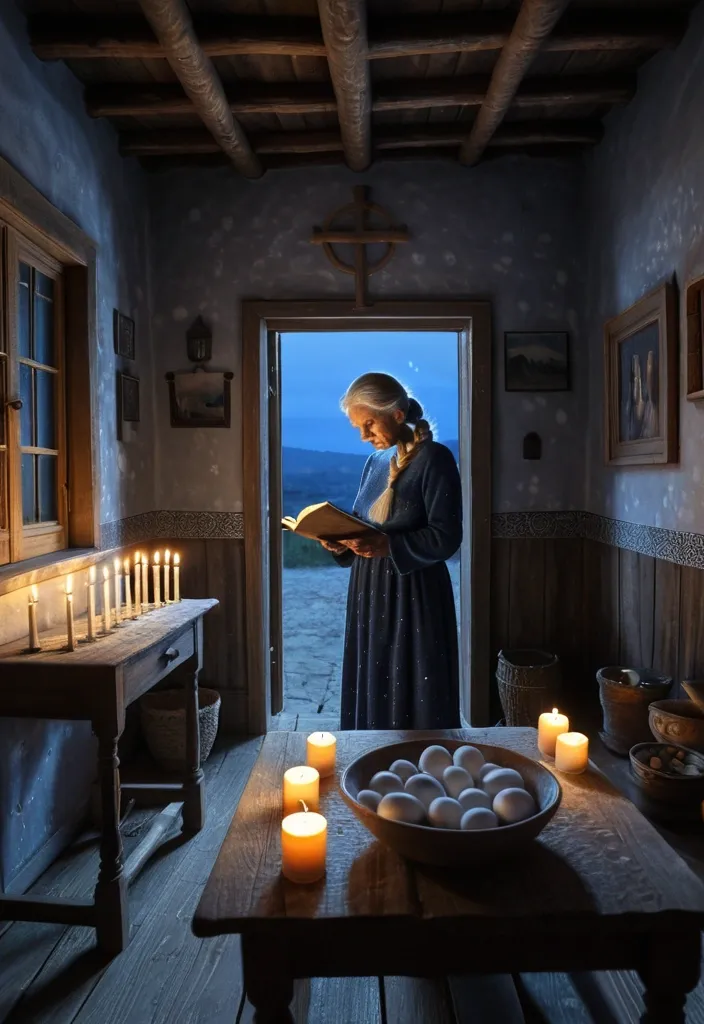
wide horizontal composition , landscape orientation , cinematic widescreen format , 16:9 aspect ratio , panoramic view , elderly woman with silver braid standing at wooden table , traditional rustic room at night , moonlight through window , candlelight illumination , twelve white candles in ceramic holders , two parallel rows , crystal vase with twenty one eggs , three stacked bread loaves , wooden bowl with poppy seeds , sea salt in ceramic dish , woman reading handwritten book , hand hovering over ritual items , wooden icon on wall , simple wooden chair , textured plaster walls , aged wooden floorboards , doorway perspective view , silvery moonlight path , golden candlelight glow , window frame shadows forming cross pattern , floating dust motes like stars , dark blue woolen dress and shawl , stunning environment , dusk lighting , ultra detailed , intricate detail , volumetric lighting , vivid colours , photorealistic , photography , lifelike , high resolution , digital art , doorway view , interior perspective , wallpaper , wide angle lens , horizontal framing ,
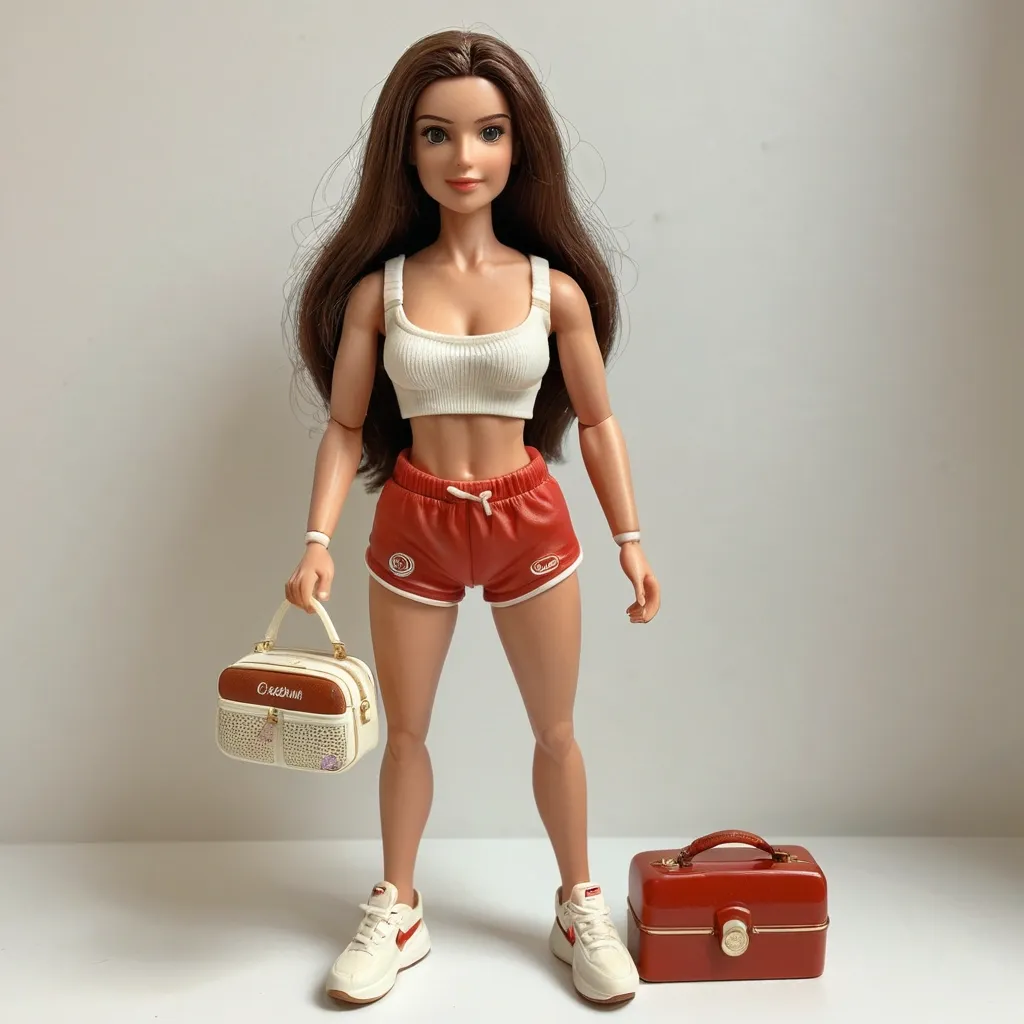
Whole body of a beautiful woman action figure. 9:16 ratio. Woman , slim , beautiful , large eyes , brown eyes , Whole body , mid-wide face , big nose , thick lips , hair , chestnut , seeds , , hair largo , staring straight into the camera , with tight red sports shorts , white bra top , , white tennis shoes , de Whole body , standing , with hands on waist , happy soft smile.She is a premium collectible toy style. The woman doll should be standing and face forward. The package should have a header with the phrase 'Olivian' in large print. The accessories in the next compartment to the figure are a cream knit bra top , a vintage handbag , and a luxurious mobile phone. ,

Generate an image of a cinnamon bun with grapes , pistachio seeds , and ruby chocolate chips on top of it. The cinamon bun is put on a matte grass green ceramic plate. The cinnamon bun has honey on it in thin strands. The plate also has a small portion of whipped cream on it , next to the cinnamon bun. There is a delicate filigree desert fork next to the plate , on a rich cherry colored napkin. ,
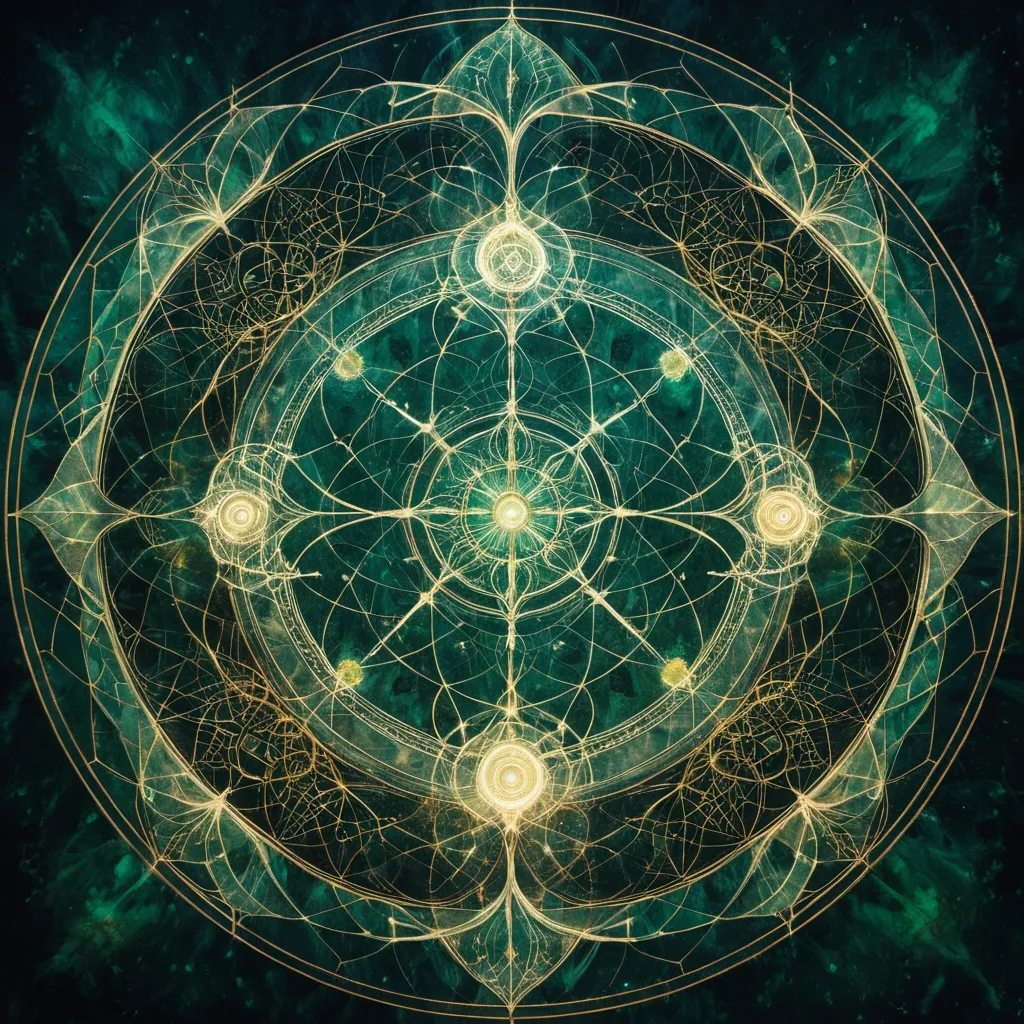
mystical organic etching combined with digital light painting by Leonardo da Vinci and James Jean , a sacred circular diagram of ancestral energy flows: at the center a luminous crystalline heart radiating soft pulses , four directional streams emerging - top: children figures playing with glowing fractal seeds , left: ancestral silhouettes passing ethereal scrolls of time , right: translucent future beings weaving light structures , bottom: elder spirits rooted into earth with wisdom trees , all connected by a gentle counterclockwise flow of energy , cosmic background with subtle fibonacci spirals , gold leaf and deep emerald green color palette on textured parchment , soft volumetric lighting , circular composition , masterpiece , intricate details , symbolic storytelling without text ,

mystical organic etching combined with digital light painting by Leonardo da Vinci and James Jean , a sacred circular diagram of ancestral energy flows: at the center a luminous crystalline heart radiating soft pulses , four directional streams emerging - top: children figures playing with glowing fractal seeds , left: ancestral silhouettes passing ethereal scrolls of time , right: translucent future beings weaving light structures , bottom: elder spirits rooted into earth with wisdom trees , all connected by a gentle counterclockwise flow of energy , cosmic background with subtle fibonacci spirals , gold leaf and deep emerald green color palette on textured parchment , soft volumetric lighting , circular composition , masterpiece , intricate details , symbolic storytelling without text ,

mystical organic etching combined with digital light painting by Leonardo da Vinci and James Jean , a sacred circular diagram of ancestral energy flows: at the center a luminous crystalline heart radiating soft pulses , four directional streams emerging - top: children figures playing with glowing fractal seeds , left: ancestral silhouettes passing ethereal scrolls of time , right: translucent future beings weaving light structures , bottom: elder spirits rooted into earth with wisdom trees , all connected by a gentle counterclockwise flow of energy , cosmic background with subtle fibonacci spirals , gold leaf and deep emerald green color palette on textured parchment , soft volumetric lighting , circular composition , masterpiece , intricate details , symbolic storytelling without text ,
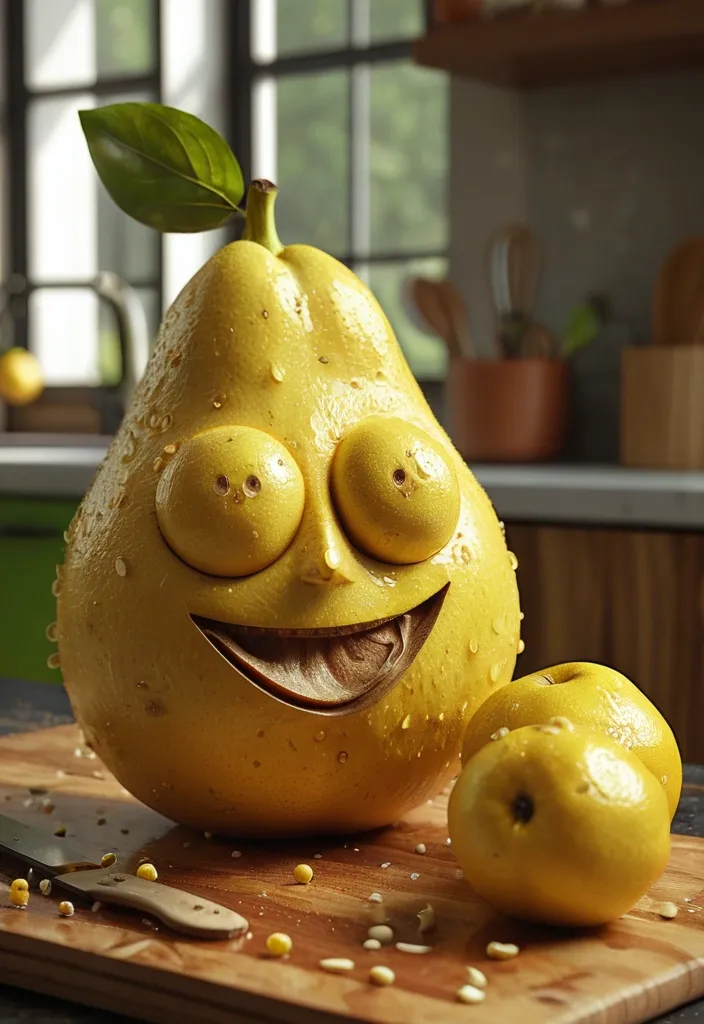
Ultrarealistic joyful face composed of kitchen elements: - Face base: Wooden cutting board with visible knife marks and wood grain texture - Eyes: Two fresh lemons with dimpled yellow skin and dewdrops - Nose: Ripe pear with green-brown stem pointing upward - Mouth: Curved banana forming a natural smile with subtle bruising details - Hair: Ginger roots with intricate knobs and root hairs sprouting upward - Accents: • Parsley leaves as eyebrows • Cherry tomato cheeks with glossy reflection • Sesame seeds as freckles scattered on cutting board Lighting: Soft window light from left creating warm highlights on fruit skins and casting subtle shadows Style: Hyperdetailed food photography , shallow depth of field (f/1.8) Background: Blurred rustic kitchen with copper pots and herb jars Color Palette: » Lemon yellow (#FFD700) » Ginger brown (#C06F34) » Pear green (#A1E44D) Technical: 8K resolution , macro lens details , natural texture enhancement --ar 4:3 --style photorealistic --food_styling ,

Elegant digital art. Medium shot. A gothic cyborg supermodel with perfect features , kneels in prayer amidst a blizzard of dandelion seeds , her body a fusion of metal , bone , and delicate floral elements. The air crackles with arcane energy. Inspired by Artgerm , WLOP , and Glenn Fabry. Drips , sparks , and weightlessness add to the surreal atmosphere. Sharp focus , intricate linework , vivid colors , and dramatic lighting create a darkly imaginative scene. Trending on Artstation , a masterpiece , 8k. ar-9:16 ,
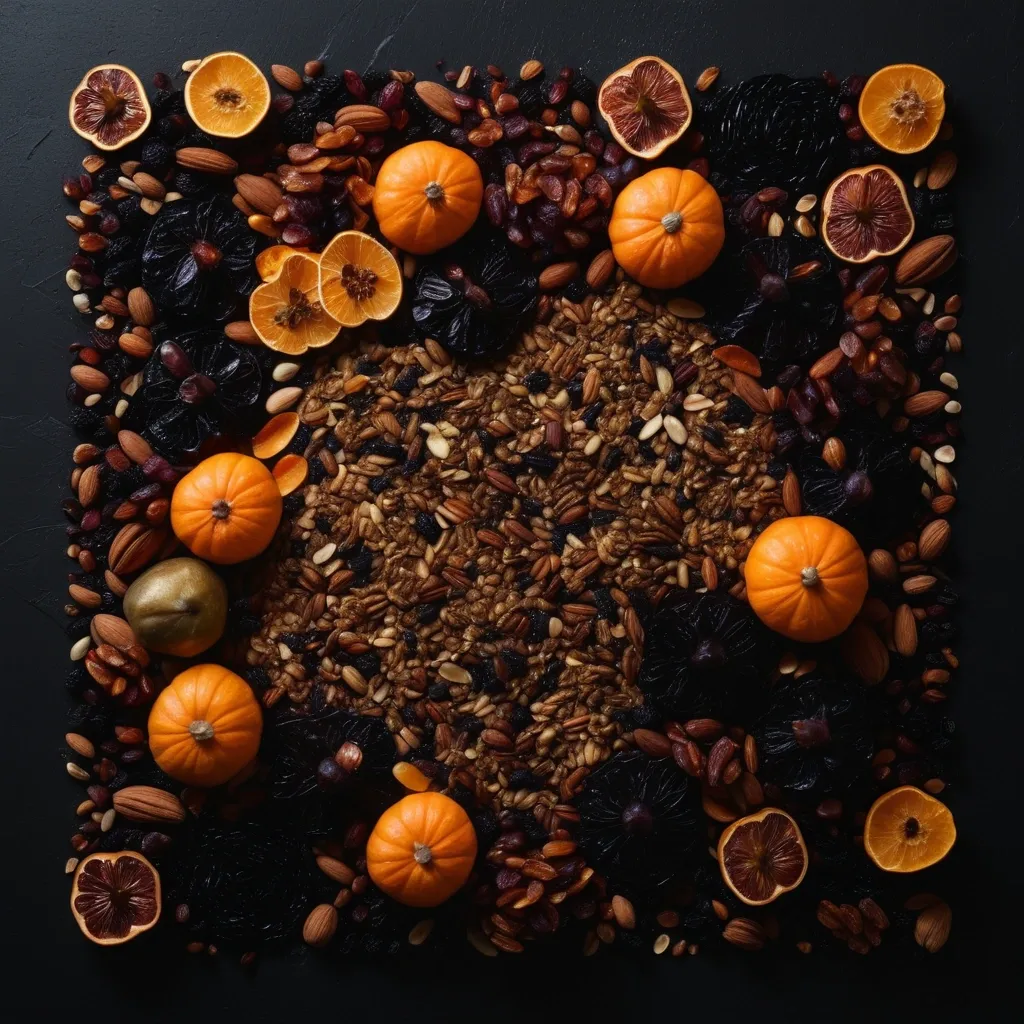
A photograph of an artful arrangement of dried fruits and nuts on a stark black surface , viewed from directly above. Scattered around the edges are plump raisins , sticky Medjool dates , hearty rolled oats , and pumpkin seeds , creating a textured border surrounding an empty center space. The fruits and nuts exhibit a rich , deep color palette , highlighted by the bright , focused lighting that emphasizes their natural textures and subtle details. The composition is clean and minimalist , resulting in a visually appealing and appetizing still life. ,
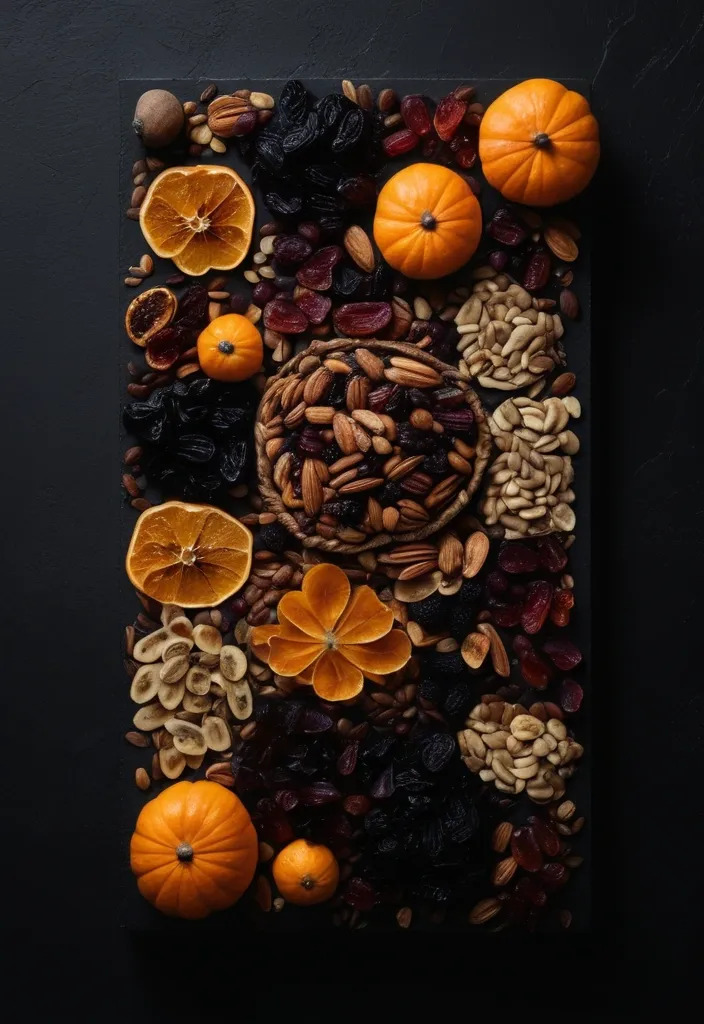
A photograph of an artful arrangement of dried fruits and nuts on a stark black surface , viewed from directly above. Scattered around the edges are plump raisins , sticky Medjool dates , hearty rolled oats , and pumpkin seeds , creating a textured border surrounding an empty center space. The fruits and nuts exhibit a rich , deep color palette , highlighted by the bright , focused lighting that emphasizes their natural textures and subtle details. The composition is clean and minimalist , resulting in a visually appealing and appetizing still life. ,
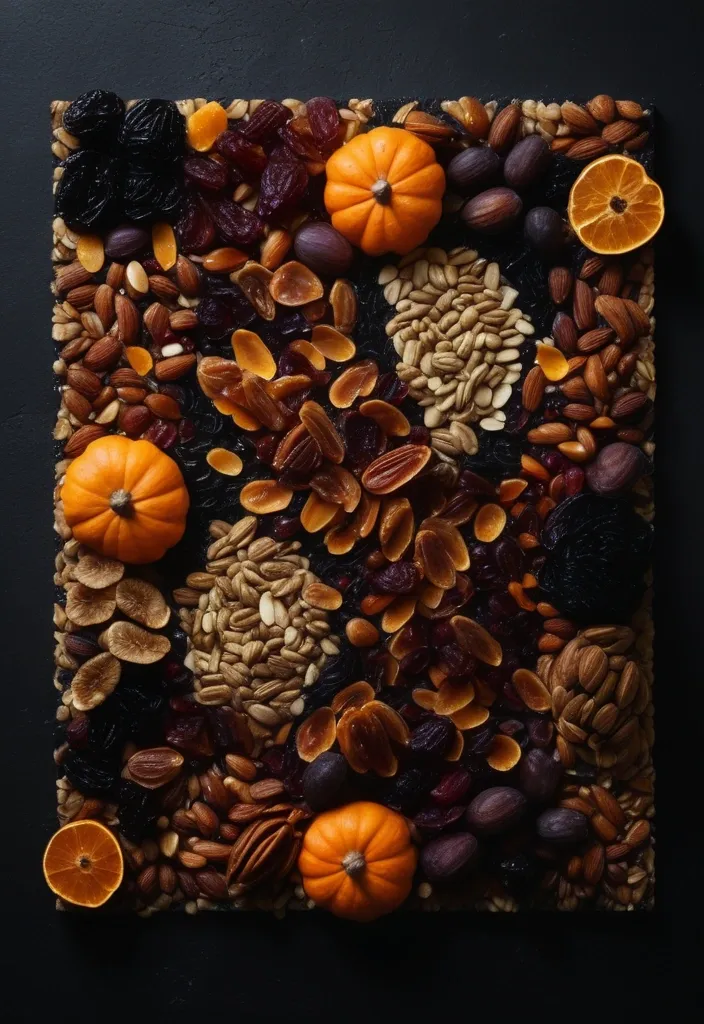
A photograph of an artful arrangement of dried fruits and nuts on a stark black surface , viewed from directly above. Scattered around the edges are plump raisins , sticky Medjool dates , hearty rolled oats , and pumpkin seeds , creating a textured border surrounding an empty center space. The fruits and nuts exhibit a rich , deep color palette , highlighted by the bright , focused lighting that emphasizes their natural textures and subtle details. The composition is clean and minimalist , resulting in a visually appealing and appetizing still life. ,
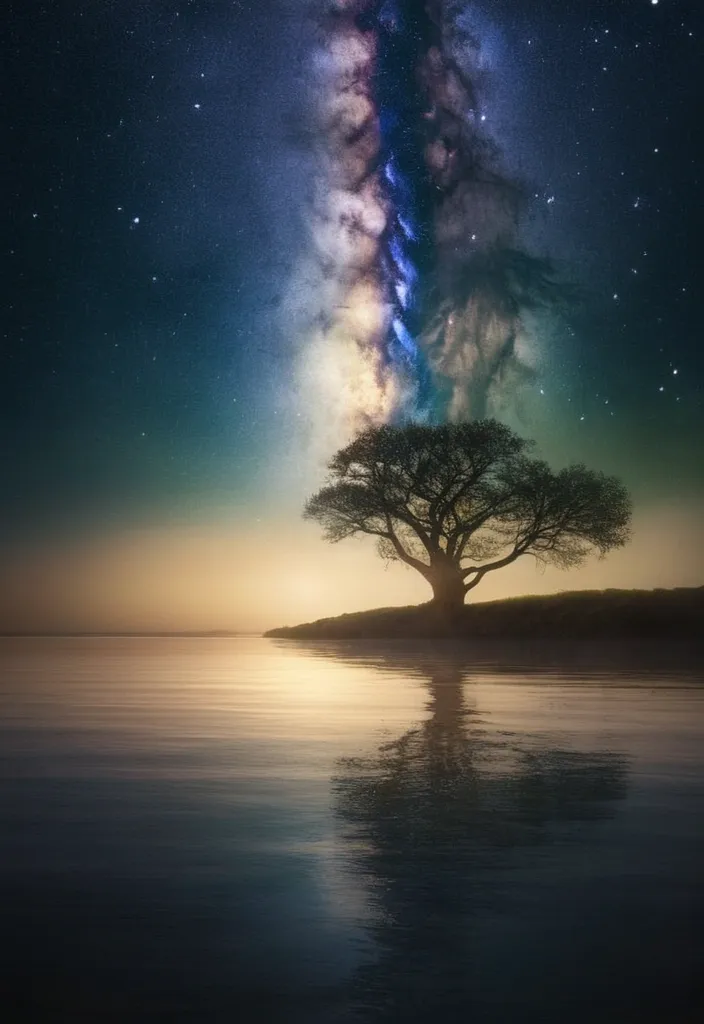
In the beginning God created the sky and the earth. The earth was empty and had no form. Darkness covered the ocean , and God’s Spirit was moving over the water. Then God said , “Let there be light!” And there was light. God saw that the light was good. So he divided the light from the darkness. God named the light “day” and the darkness “night.” Evening passed , and morning came. This was the first day. Then God said , “Let there be something to divide the water in two!” So God made the air to divide the water in two. Some of the water was above the air , and some of the water was below it. God named the air “sky.” Evening passed , and morning came. This was the second day. Then God said , “Let the water under the sky be gathered together so the dry land will appear.” And it happened. God named the dry land “earth.” He named the water that was gathered together “seas.” God saw that this was good. Then God said , “Let the earth produce plants. Some plants will make grain for seeds. Others will make fruit with seeds in it. Every seed will produce more of its own kind of plant.” And it happened. The earth produced plants. Some plants had grain for seeds. The trees made fruit with seeds in it. Each seed grew its own kind of plant. God saw that all this was good. Evening passed , and morning came. This was the third day. Then God said , “Let there be lights in the sky to separate day from night. These lights will be used for signs , seasons , days and years. They will be in the sky to give light to the earth.” And it happened. So God made the two large lights. He made the brighter light to rule the day. He made the smaller light to rule the night. He also made the stars. God put all these in the sky to shine on the earth. They are to rule over the day and over the night. He put them there to separate the light from the darkness. God saw that all these things were good. Evening passed , and morning came. This was the fourth day. Then God said , “Let the water be filled with living things. And let birds fly in the air above the earth.” So God created the large sea animals. He created every living thing that moves in the sea. The sea is filled with these living things. Each one produces more of its own kind. God also made every bird that flies. And each bird produces more of its own kind. God saw that this was good. God blessed them and said , “Have many young ones and grow in number. Fill the water of the seas , and let the birds grow in number on the earth.” Evening passed , and morning came. This was the fifth day. Then God said , “Let the earth be filled with animals. And let each produce more of its own kind. Let there be tame animals and small crawling animals and wild animals. And let each produce more of its kind.” And it happened. So God made the wild animals , the tame animals and all the small crawling animals to produce more of their own kind. God saw that this was good. Then God said , “Let us make human beings in our image and likeness. And let them rule over the fish in the sea and the birds in the sky. Let them rule over the tame animals , over all the earth and over all the small crawling animals on the earth.” So God created human beings in his image. In the image of God he created them. He created them male and female. God blessed them and said , “Have many children and grow in number. Fill the earth and be its master. Rule over the fish in the sea and over the birds in the sky. Rule over every living thing that moves on the earth.” God said , “Look , I have given you all the plants that have grain for seeds. And I have given you all the trees whose fruits have seeds in them. They will be food for you. I have given all the green plants to all the animals to eat. They will be food for every wild animal , every bird of the air and every small crawling animal.” And it happened. God looked at everything he had made , and it was very good. Evening passed , and morning came. This was the sixth day. ,

a portrait of a girl holding a pink pinky red umbrella , epic. In style of Greg Rutkowski , greek city in the background , ornate goth dress , by alex grey , huge feathery wings , gorgeous Kacey Rohl , mowing the lawn , luscious patty with sesame seeds , super graphically realistic detailed , holding a candle , red eyes ,
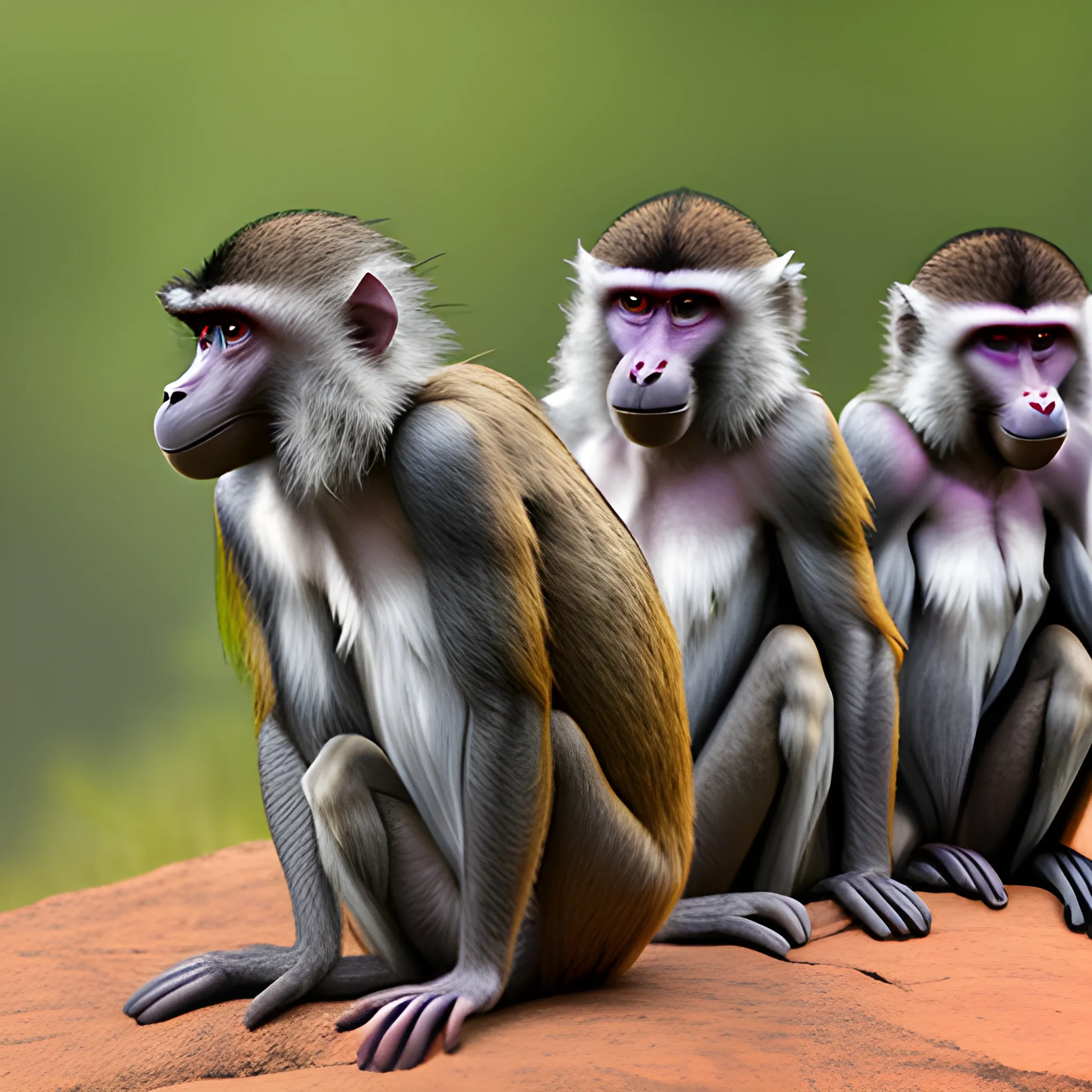
Appearance: The Baboon is a medium-sized primate with a distinctive and charismatic appearance. It has a robust and muscular body , covered in short fur that can range in color from brown to gray or even olive-green. Baboons have a dog-like snout , sharp teeth , and a hairless face with prominent cheek pouches , which they use to store food. They have long arms and powerful legs , allowing them to move quickly and with agility. Features: Baboons are highly social creatures , living in close-knit troops that can consist of a few individuals to larger groups. Their intelligence and adaptability enable them to survive in various environments , from lush jungles to arid savannahs. They are known for their strong social hierarchy and complex communication , using vocalizations , gestures , and facial expressions to convey emotions and intentions. Habitat: Baboons are versatile animals that can thrive in a range of habitats , including forests , grasslands , and mountainous regions. They are often found near water sources , as they require regular access to drinking water. In your DND world , baboons might inhabit areas with lush vegetation or live in proximity to humanoid settlements , scavenging for food scraps. Behavior: Baboons are opportunistic omnivores , with a varied diet that includes fruits , leaves , seeds , insects , and small animals. They are skilled climbers and can use their agility to escape predators or reach high-up food sources. Baboons are known for their playfulness , engaging in social interactions , grooming , and even games with each other. Role in the World: In your DND world , baboons could serve as a part of the natural ecosystem or be associated with certain deities or nature spirits. Druids and rangers might have a special connection with baboons , viewing them as symbols of adaptability and community. Encountering baboons in the wild could present various opportunities for adventurers. They might have non-combat interactions with the primates , such as observing their social behaviors or using animal handling skills to communicate with them. Baboons could also play a role in quests involving local tribes or settlements , where their presence might be considered either beneficial or problematic depending on the circumstances. While not inherently aggressive , baboons can defend themselves and their troop if they feel threatened , making it essential for adventurers to approach them with respect and caution. ,

Appearance: The Baboon is a medium-sized primate with a distinctive and charismatic appearance. It has a robust and muscular body , covered in short fur that can range in color from brown to gray or even olive-green. Baboons have a dog-like snout , sharp teeth , and a hairless face with prominent cheek pouches , which they use to store food. They have long arms and powerful legs , allowing them to move quickly and with agility. Features: Baboons are highly social creatures , living in close-knit troops that can consist of a few individuals to larger groups. Their intelligence and adaptability enable them to survive in various environments , from lush jungles to arid savannahs. They are known for their strong social hierarchy and complex communication , using vocalizations , gestures , and facial expressions to convey emotions and intentions. Habitat: Baboons are versatile animals that can thrive in a range of habitats , including forests , grasslands , and mountainous regions. They are often found near water sources , as they require regular access to drinking water. In your DND world , baboons might inhabit areas with lush vegetation or live in proximity to humanoid settlements , scavenging for food scraps. Behavior: Baboons are opportunistic omnivores , with a varied diet that includes fruits , leaves , seeds , insects , and small animals. They are skilled climbers and can use their agility to escape predators or reach high-up food sources. Baboons are known for their playfulness , engaging in social interactions , grooming , and even games with each other. Role in the World: In your DND world , baboons could serve as a part of the natural ecosystem or be associated with certain deities or nature spirits. Druids and rangers might have a special connection with baboons , viewing them as symbols of adaptability and community. Encountering baboons in the wild could present various opportunities for adventurers. They might have non-combat interactions with the primates , such as observing their social behaviors or using animal handling skills to communicate with them. Baboons could also play a role in quests involving local tribes or settlements , where their presence might be considered either beneficial or problematic depending on the circumstances. While not inherently aggressive , baboons can defend themselves and their troop if they feel threatened , making it essential for adventurers to approach them with respect and caution. ,
